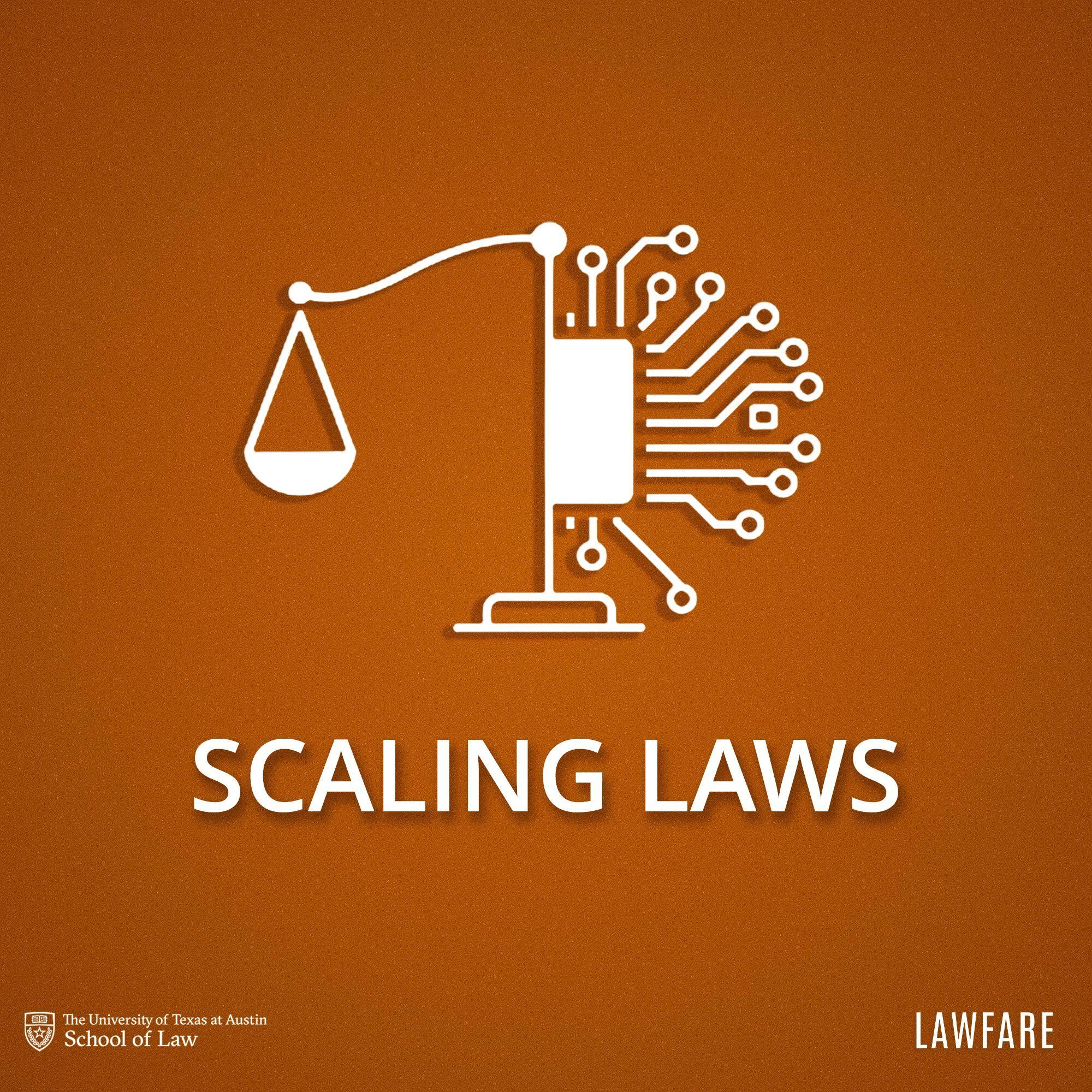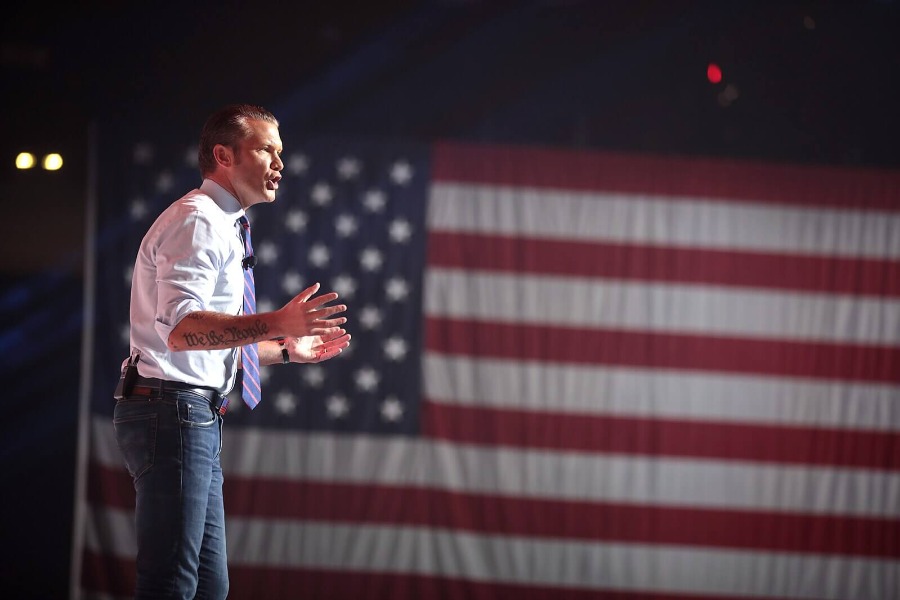The Indeterminacy of Zivotofsky’s Exclusivity Analysis
Much anticipated for any number of reasons, Zivotofsky was perhaps most awaited for the valuable contribution it was to make in the form of its analysis of the scope of exclusive executive power. This analysis was expected to begin to answer a key question lingering after Justice Jackson’s Youngstown concurrence.
Published by The Lawfare Institute
in Cooperation With

Much anticipated for any number of reasons, Zivotofsky was perhaps most awaited for the valuable contribution it was to make in the form of its analysis of the scope of exclusive executive power. This analysis was expected to begin to answer a key question lingering after Justice Jackson’s Youngstown concurrence.
In Youngstown, Justice Jackson penned a famous concurrence in which he placed exercises of presidential power into three “categories.” In Category #1, the President “acts pursuant to an express or implied authorization of Congress,” and as a result, “his authority is at its maximum, for it includes all that he possesses in his own right plus all that Congress can delegate.” In Category #2, the President acts in the face of “congressional inertia, indifference or quiescence,” such that he may rely only on his independent, inherent authority. Finally, in Category #3, “the President takes measures incompatible with the expressed or implied will of Congress.” There, Justice Jackson warned, the President’s
power is at its lowest ebb, for then he can rely only upon his own constitutional powers minus any constitutional powers of Congress over the matter. Courts can sustain exclusive presidential control in such a case only by disabling the Congress from acting upon the subject. (emphasis added)
Foreign relations law has long struggled with this third category, in part because—prior to Zivotofksy—the Court had ducked what Jack referred to as “the super-hard problem of defining the contours of exclusive presidential power based on the vague and uncertain textual materials in Article II.” The Court had refused to set forth the President’s exclusive powers in foreign affairs, or even to point to a method of separating exclusive powers from run-of-the-mill concurrent ones. As a result, “the scope of exclusive presidential power [was] dramatically undertheorized” (emphasis omitted).
Zivotofsky plunged into the heart of Category #3 and—for the first time in a foreign affairs case—sustained an executive action in defiance of a congressional mandate by finding exclusive presidential power. The Court held that the President has the exclusive power “to control recognition determinations, including formal statements by the Executive Branch acknowledging the legitimacy of a state or government and its territorial bounds.” (A summary is available here.)
As important as this outcome was, the Court’s reasoning should have been even more significant: it could have helped structure and guide future exclusivity analyses. However, the Court failed to set forth a compelling or clear method of deciding on the exclusivity of presidential powers. Although Justice Kennedy assured his readers that the Court’s holding would be buttressed by “the Constitution’s text and structure, as well as precedent and history,” I argue below that each of those sources proved to be indeterminate with respect to the President’s recognition power. This approach is troubling, not only because it threatens to promote divergent outcomes among the lower courts in the future, but also because it opens the door to problematic “functional” analyses of the type exemplified by Zivotofsky itself.
Text and Structure
At the outset of its analysis, the Court found executive exclusivity over the recognition power based on a simple logic drawn from the Constitution’s text and structure. First, Justice Kennedy argued that the Receptions Clause can “be understood to acknowledge [the President’s] power to recognize other nations.” The majority added that this conclusion was bolstered by the President’s powers to make treaties and appoint ambassadors, which “give the President control over recognition decisions.” So while “recognition may be effected by different means, . . . each means is dependent upon Presidential power.” Finally, the Court inferred from “[t]he various ways in which the President may unilaterally effect recognition [on his own initiative]—and the lack of any similar power vested in Congress”—that the executive recognition power was necessarily exclusive.
But this logic seems a leap too far. In his Youngstown concurrence, Justice Jackson noted that a President has exclusive authority only when the Constitution “disabl[es] the Congress from acting upon the subject” and confers “a power at once so conclusive and preclusive” that only the President may act. But as Justice Kennedy admitted, “the President cannot make a treaty or appoint an ambassador without the approval of the Senate.” Thus, although the President has “different means” of recognizing foreign governments, the Constitution requires congressional participation in (at least) two of those means.
In other words, because the Constitution contemplates congressional participation in some recognition decisions, it does not seem to entirely “disable” or “preclude” a role for Congress. As the Chief Justice put it, the treatymaking and appointment “authorities are shared with Congress, so they hardly support an inference that the recognition power is exclusive.” If anything, the opposite might be inferred from the mixing and matching of national powers between the legislative and executive branches.
Precedent
Besides text and structure, the Court also relied on precedent, arguing that a “fair reading” of past decisions “shows that the President’s role in the recognition process is both central and exclusive.”
But while the majority managed to show the “central” role of the Executive in the recognition process, it fell short in demonstrating an “exclusive” one. As the Court freely admitted, most precedent seemed to bear little on the question of exclusivity. For instance, Pink and Belmont “considered the validity of executive agreements, not the initial act of recognition,” and they were federalism—rather than separation-of-powers—cases.
But perhaps most problematically for the Court, in those cases the President acted in the face of congressional silence—Justice Jackson’s Category #2, in other words. Thus, while it is fair to read Pink and Belmont as supporting the President’s power of recognition, the cases have nothing to say about whether that power is exclusive or concurrent — the question that the Court purported to be answering in this part of its analysis. The same infirmity underlies the Zivotofsky majority’s citation of Williams and Guaranty Trust Co.
The Court also cited Banco Nacional de Cuba, which stated baldly that “[p]olitical recognition is exclusively a function of the Executive.” But this language constitutes the purest dicta, and more importantly, it was followed by a line which affirms that the Court was primarily drawing a distinction between the judicial and political branches, rather than between the President and Congress: “The possible incongruity of judicial ‘recognition,’ by permitting suit, of a government not recognized by the Executive is completely absent when merely diplomatic relations are broken.” Indeed, Justice Kennedy distinguished several cases offered by Zivotofsky on similar grounds: he noted that in previous cases, “the Court . . . mentioned both of the political branches in discussing international recognition, but it [did] so primarily in affirming that the Judiciary is not responsible for recognizing foreign nations.” Similar logic applies to Banco Nacional’s dictum.
Ironically, the Court finished its analysis of precedent with an attack on Curtiss-Wright Export Corp. That case is littered with dicta supporting broad presidential power, and it has long been viewed as the high-water mark of judicial support for presidential control over foreign affairs. In Zivotofsky, the Court was quick to downplay the lingering relevance of Curtiss-Wright: its expansive language “was not necessary to” its holding, “which, after all, dealt with congressionally authorized action, not a unilateral Presidential determination.” In other words, the Court distinguished Curtiss-Wright’s dicta by observing that the case fell into Justice Jackson’s Category #1 rather than Category #3. But of course, a similar critique can be leveled at every other snippet of precedent cited by the Zivotofsky Court.
History
Finally, the Court tried to rely on “accepted understandings and practice” in support of exclusivity. It found that “on balance,” history “confirms the Court’s conclusion . . . that the power to recognize or decline to recognize a foreign state and its territorial bounds resides in the President alone.”
For all the historical analysis, though, the majority did not offer a single historical incident relevant to the question of exclusivity. As the Court noted, countless Presidents have “claimed unilateral authority to recognize foreign sovereigns.” But whether the Executive has exercised the recognition power in the past speaks only to the question of whether the Executive has the power at all, and not whether it is exclusive. So when the Court admitted that “[f]or the most part, Congress has acquiesced in the Executive’s exercise of the recognition power,” it was conceding that the bulk of its historical analysis was drawn from incidents in Justice Jackson’s first or second Youngstown category, rather than his third. But only Category #3—a clash between Congress and the President—can shed light on whether the President has authority that prevails over a contrary congressional determination.
The Court cited six specific historical incidents. In none of them had the President acted in defiance of congressional wishes.
- In the first example—recognition of revolutionary France—the President acted alone. Congress was silent, not hostile, putting this example in Justice Jackson’s Category #2.
- In the other five examples, the President acted in Category #1. In three—the recognition of the South American republics, Cuba, and China—Congress agreed with the President’s view. In the last two—recognition of Texas, as well as of Liberia and Haiti—the President was either persuaded by or waited for Congress’s views before acting. (So just as “some Presidents have chosen to cooperate with Congress,” some Congresses have chosen to cooperate with the President.)
Notably absent from the Court’s historical analysis is any incident where the President overrode a contrary determination by Congress. Indeed, because the incidents fall into Justice Jackson’s Category #1 or #2, they are all perfectly consistent with the idea that the President has a non-exclusive recognition power concurrent with Congress’s own authority. (And this point is not a new one: at least one perceptive case comment picked up on it (and the trouble with the Court’s precedents) in the wake of the D.C. Circuit’s opinion in the case.)
At most, Justice Kennedy musters a few pro-exclusivity statements made by some members of Congress during debates. But these isolated statements do not rise to the level of an institutional position. Even in statutory interpretation, they would be worth little, and in Zivotofsky, they are more than offset by contrary statements made by Presidents Jackson and Lincoln, who each acknowledged Congress’s relevance in the recognition process.
At the end of the day, then, the Court has no pertinent historical support. To borrow language from an unrelated portion of Justice Scalia’s dissent, the majority “establishes Presidential authority over passports in the face of congressional silence [or agreement], not Presidential authority in the face of congressional opposition.”
* * *
While the Court promised to support its exclusivity holding through text, structure, precedent, and history, those sources are not enough for a compelling argument for exclusivity. Indeed, the Court seemed to recognize this uncertainty at points, admitting that some precedent “lend[s] support to the position that Congress has a role in the recognition process” and that “history is not all on one side.” Yet despite this indeterminacy, Justice Kennedy seemed to think that—on balance—the evidence leaned toward exclusivity. For him, that was enough. But in Justice Jackson’s third category, presidential power is supposed to be at “its lowest ebb,” and the default in our constitutional system has always been that Congress makes the laws and that the President executes them faithfully. The Court should have stuck by this presumption in the absence of less indeterminate evidence of exclusivity.
Instead, Zivotofsky places a crucial foreign affairs power beyond the direct reach of Congress. And if the majority’s analysis was enough to justify exclusivity in this case, then it will be sufficient to do so in many other major foreign affairs cases as well. In the future, lower courts will be able to mold the same legal sources in a way that points toward a preferred outcome, much as the Court did in Zivotofsky.
This is not to say that the Court offers no other reason for exclusivity in its opinion. As Jack and Paul have observed, the majority leaned heavily on “functional considerations” in its analysis. “Put simply,” the Court wrote, “the Nation must have a single policy regarding which governments are legitimate in the eyes of the United States and which are not.” Because “the Executive has the characteristic of unity at all times,” that branch is better positioned to speak with “one voice” on recognition than Congress is.
Whether “functional considerations” serve as a proper basis for judicial decisionmaking goes beyond the scope of this post. The Court’s functionalism may also suffer the same defect as the majority’s other analysis: it may justify inherent presidential authority over recognition without explaining why the President must have the exclusive final say, especially when it is extraordinarily difficult and rare for Congress to override the President on a recognition issue. But in any event, it is worth quoting Justice Scalia’s dissent, which warns that
[t]he vices of this mode of analysis go beyond mere lack of footing in the Constitution. Functionalism of the sort the Court practices today will systematically favor the unitary President over the plural Congress in disputes involving foreign affairs. It is possible that this approach will make for more effective foreign policy, perhaps as effective as that of a monarchy. It is certain that, in the long run, it will erode the structure of separated powers that the People established for the protection of their liberty.
Given these concerns, “functional considerations” should not be dispositive in an exclusivity analysis.





